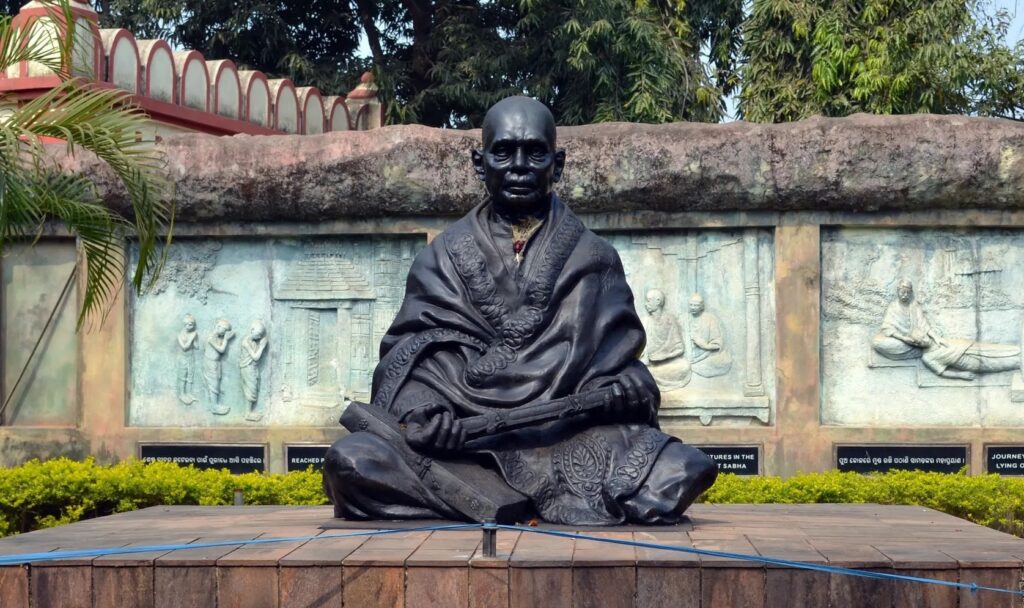
Introduction
Astronomy, one of the oldest fields of science, has its roots in the observational and intuitive power of human intellect, which has forever been curious and intrigued by the heavens above, especially the motion of planets, stars, other heavenly bodies and of our moon and the sun. The history of astronomy is, in a sense, the history of the evolution of human cognition and experimental enterprise. We know much about the deep sky today, including evidence of the existence of black holes—from which even light cannot escape—thanks to the remarkable technological and scientific progress made in the past few decades. However, the humble truth is that even without any powerful modern observational probes, some of our ancestors had figured out a lot about the solar system, including the motion of planets: their rotation and revolution, eclipses, transits of planets and much more. They created calendars, based on their naked-eye observations and recordings, which continue to be used even to this day!
Arguably, observational astronomy can be called one of the first experimental research fields to take shape simultaneously in Egypt, Babylonia, Greece, India and China, dating back to 2500 BCE or more. For instance, the great pyramids are evidence of both knowledge of the direction and motion of celestial objects, and most importantly, the mathematics needed for the design. The Babylonians were aware of the equatorial circle, equinoxes, and solstices, and had figured out the solar and lunar months. The Chinese had also started recording data on meteor showers, appearances of Halley’s comet, eclipses, and more. Their first star catalogue was ready in the fourth century BCE.1 Further, the Alexandrian school evolved as a natural progression from the Babylonian and Greek eras: Hipparchus had built an observatory, figuring out the precession of the equinox in 126 BCE. He gathered a wealth of observational data and instruments upon which Ptolemy based his work and wrote his treatise Syntaxis which then reached the middle east and was translated into Arabic. Almost everyone had independently determined the duration of a year as 365.5 days!
India’s tryst with observational astronomy and the meticulous recording of data started in the Vedic era, followed by the Vedānga era, finally gaining proper formalism during the Siddhānta era. The first Sanskrit treatise on astronomy, Sūrya-Siddhānta, was written around the fifth century CE. It was an era which had stalwarts like Āryabhaṭa, Varāhamihira, Srīpati, Mañjula, the two Bhāskaras, and culminating with Nīlakaṇṭha. Joining this league of the Siddhanta tradition was another genius who decided to carry forward and improvise upon the Siddhānta era observational data much later in the 19th century – Chandrasekhara Samanta (1835–1904).2
Pathani Chandrasekhara Samanta was the Indian stalwart who belonged to the league of extraordinary naked-eye astronomers like Copernicus, Tycho Brahe and many others who did pioneering observational work using mathematics and self-made simple apparatuses. Unfortunately, he is not known outside his home state of Orissa or outside the academic circles of the history of science and astronomy enthusiasts. However, his exemplary work finds a mention in scientific journals like Nature and Knowledge published way back in 1899!
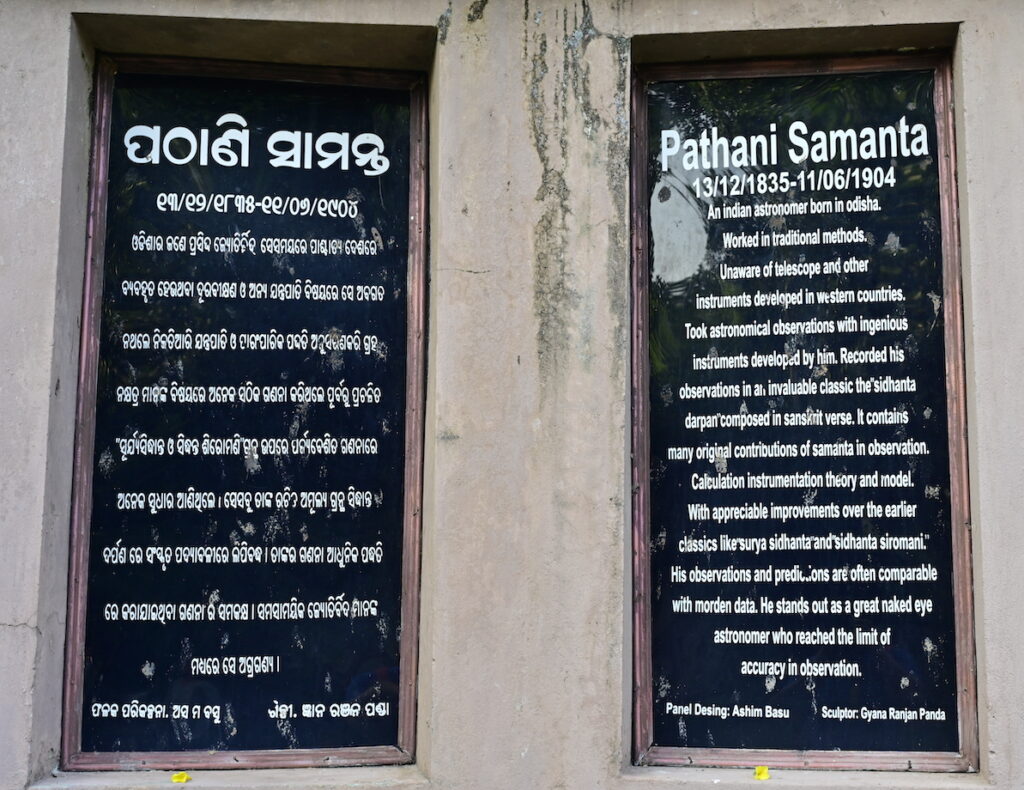 |
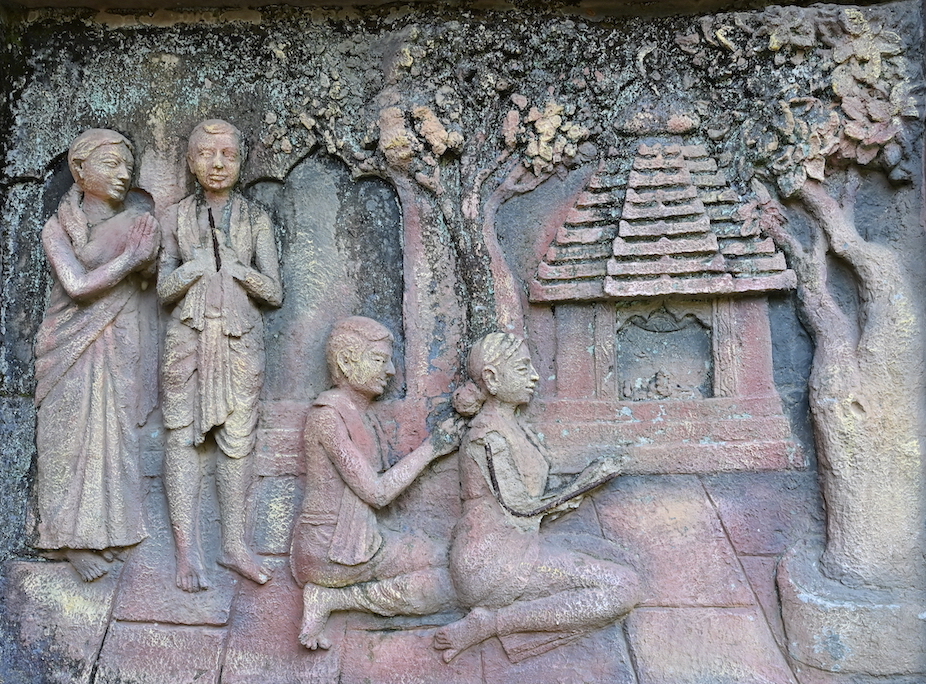 |
Birth of the traditional astronomer
Chandrasekhara Samanta was born on 13 December 1835 in the royal family of the princely state of Khandapada, Nayagarh district, Orissa. He was the son of king Samanta Syamabandhu Singha and his wife Bishnumali Devi. The legend depicted on the walls of the Pathani Samanta Planetarium states that he was born after the tragic loss of two daughters and a son in infancy. Due to their yearning for a healthy child, as per prevalent belief, he was given away to be adopted by a muslim fakir immediately after his birth to ward off the evil eye. In remembrance of the fakir, they nicknamed him Pathani. The name has since remained, being carried forward by institutions named after him in his home state.
Pathani Chandrasekhara Samanta was a bright kid with a keen interest in astronomy and mathematics. Apparently, he had spotted Venus at the age of four during the day, much to the annoyance of his father, as it was considered inauspicious to spot planets and stars during the day. He was home-schooled first by his father, who introduced him to the joys of star-gazing, and later by a brahmin teacher, who gave him basic education in both Oriya and Sanskrit, including Sanskrit grammar, the smṛtis, purāṇas and many original kāvyas. By the age of fifteen, he had become a self-learner by referring to the books available in the royal library. He was a voracious reader who devoured classical treatises like Līlāvatī, Bījagaṇita, along with works on traditional topics jyotisha, siddhānta vyākaraṇa and the kāvyas.
Soon, he got inclined towards mathematics and traditional astronomy and started matching predictions made by the ancient Siddhānta texts of Āryabhaṭa, Bhāskarācārya and others, with real observations of celestial objects in the night sky. Realising the discrepancies in the almanac dates and the conflict and confusion they often led to, he soon set out to design his own measuring instruments using materials available at hand—wood and bamboo! The ancient texts did not mention specifics about the design of the instruments, so he had to make innovative designs of his own based on hints given in those texts. He created as many as ten types of instruments for measuring time, in addition to designing instruments for measuring the heights of distant objects, and the coordinates of heavenly bodies. Some of his designs, such as Cakra-Yantra, Chāpa-Yantra, Golārdha-Yantra, Svayambha-Yantra, Gola-Yantra and Māna-Yantra, have been re-created in the planetarium named after him in Bhubaneshwar. The Māna-Yantra has become one of the most popular instruments designed by him, thanks to its simplicity and functionality.
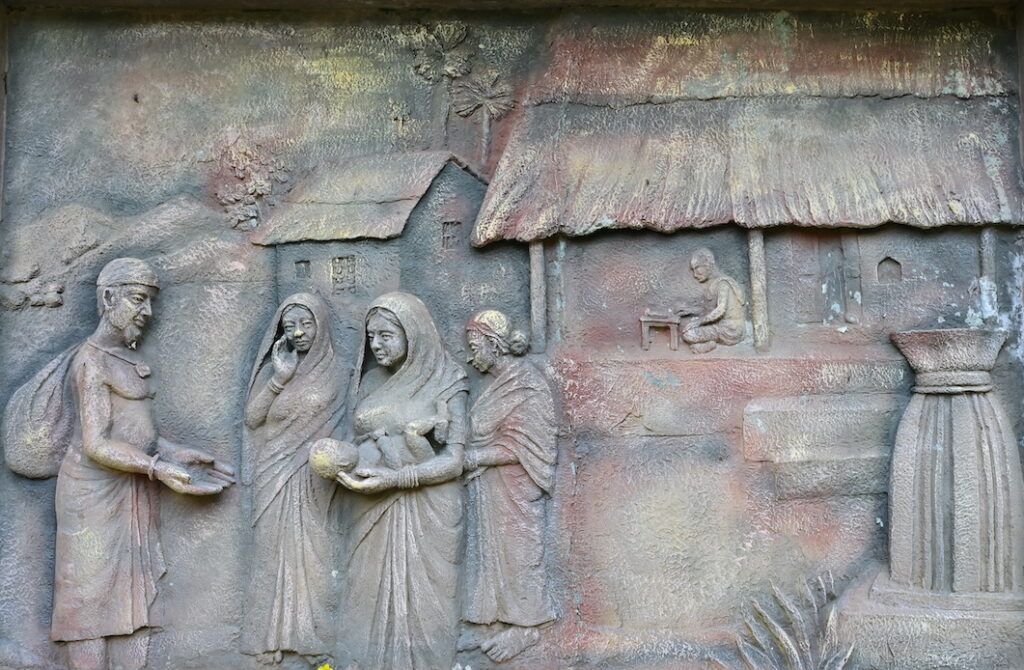 |
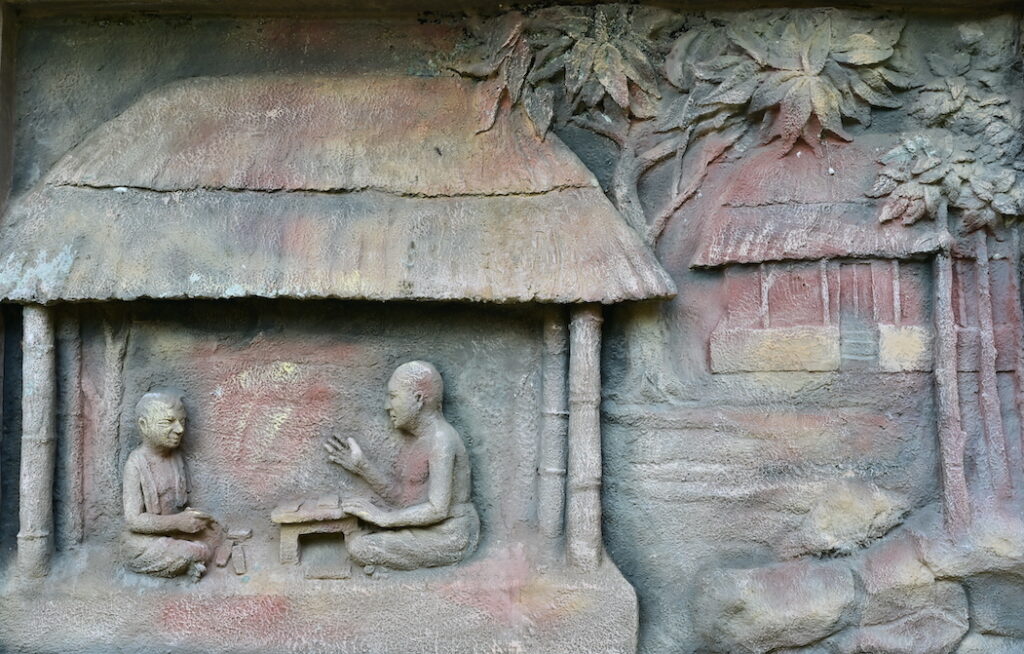 |
Observations and the pursuit of accuracy
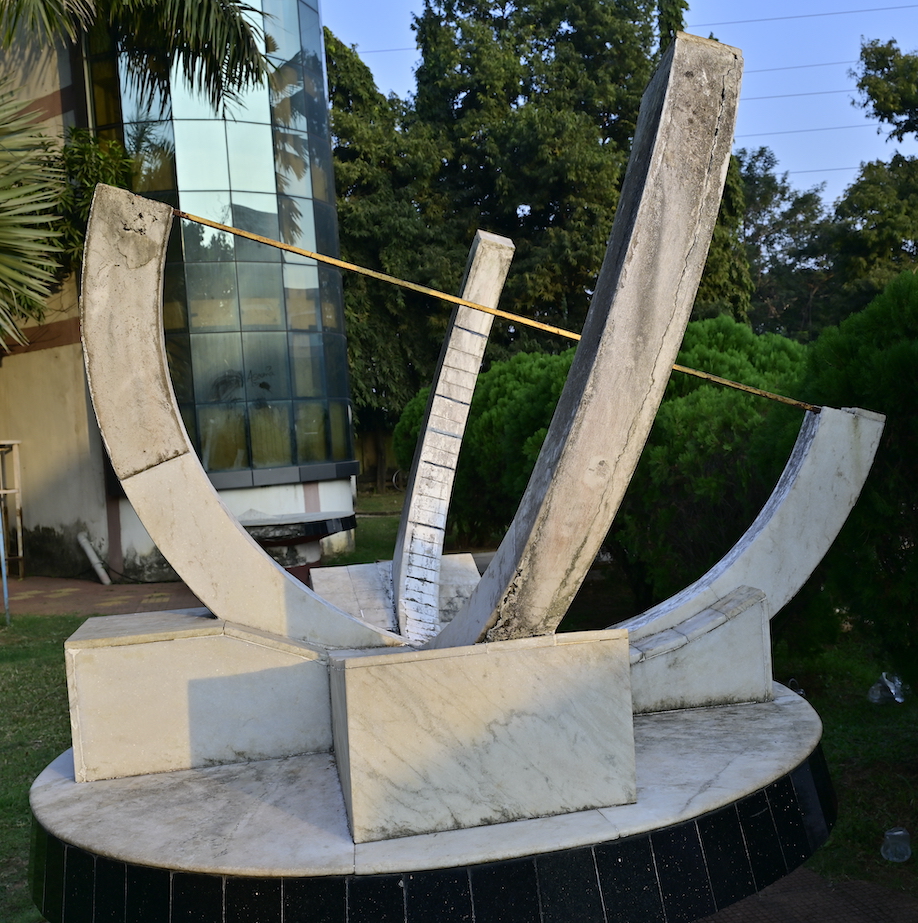
Though the legends of the West belonged to another era and, by 1835, many relatively modern knowledge systems were in place, as were works of Indian stalwarts like Nīlakaṇṭha (of the Kerala school of astronomy). Yet, it seems that Samanta was either unaware of these schools or he deliberately chose to stick to improvising two ancient Indian treatises Sūrya-Siddhānta and Siddhānta-Śiromaṇi, committed as he was to verifying and rectifying the original observations and evidence. What he did with the sources and texts he had in hand was very unusual and extraordinary: he went through these ancient Indian treatises on astronomy meticulously, matching their data with his observations and measurements, thus increasing their accuracy. He wrote his own treatise, the Siddhānta-Darpaṇa—as an improvised text in the same style, maintaining its continuity. The level of accuracy in the Siddhānta-Darpaṇa in comparison with modern observations is remarkable.
 |
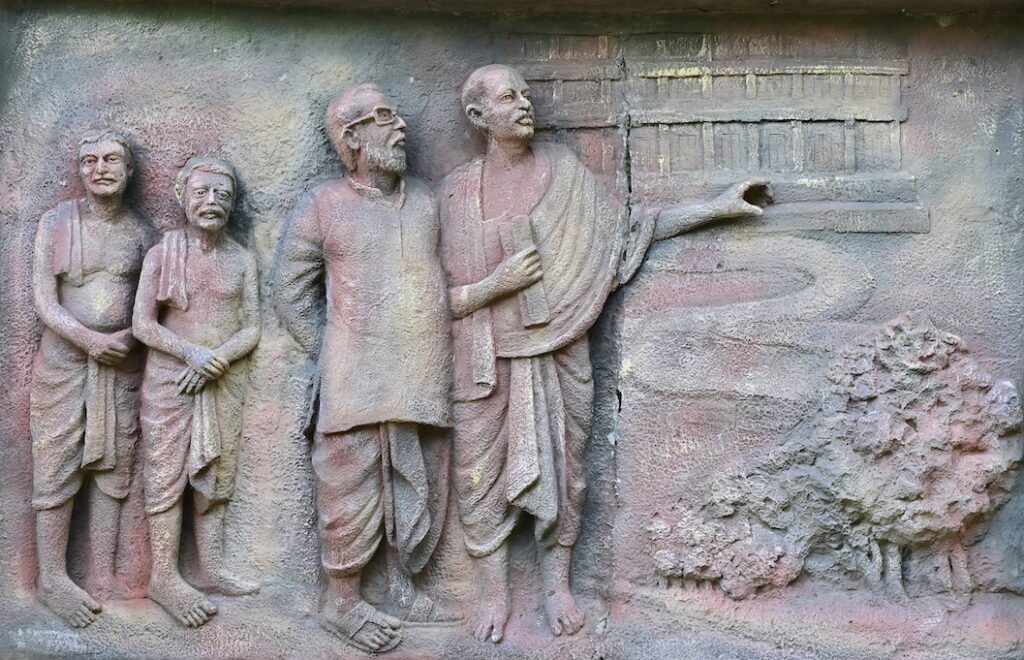 |
The following tables are from the article published by Prahallad Chandra Naik and L. Satpathy in The Bulletin of the Astronomical Society of India[4] which shows the amount of meticulous work undertaken by Samanta. The last three columns in Tables 2,3 and 4 reveal the level of accuracy he achieved through his inventiveness.

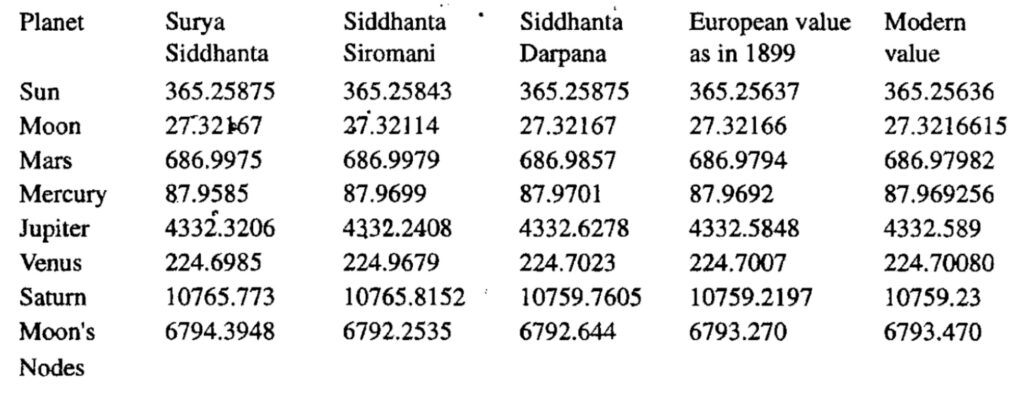 |
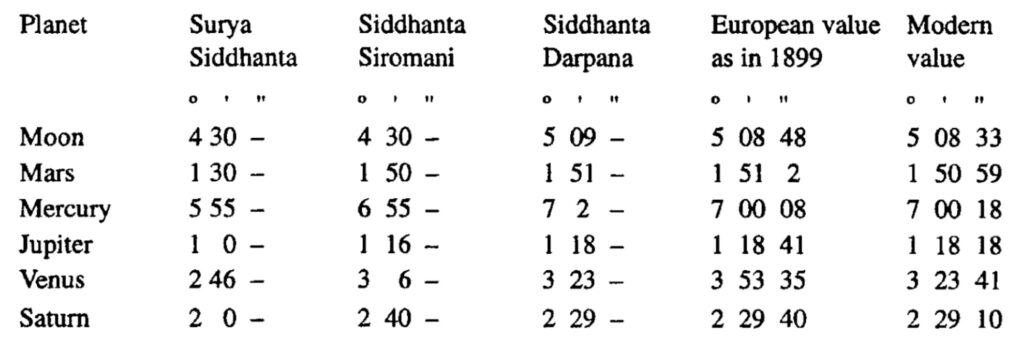 |
The Gajapati King of Puri awarded him the title of Harishchandan Mahapatra in 1870 and the Shri Jagannath temple still follows the calendar prescriptions proposed by him to observe their rituals. The British Raj conferred upon him the title of Mahamahopadhyaya in 1893 and awarded him a pension of Rs. 50 per month for his contributions to the field of astronomy after he correctly predicted the time and place of a solar eclipse which was to be visible only in Britain.

These recognitions, however, did not help him fight his battles against failing health and poverty. Although he came from a royal lineage, it was difficult for him to look after his large family along with generations of servants who had served their family. He had two small villages and a small land to his name which contributed very little to the family income. His primary focus was his scientific work and his daily routine had several hours dedicated to meditation and prayer.
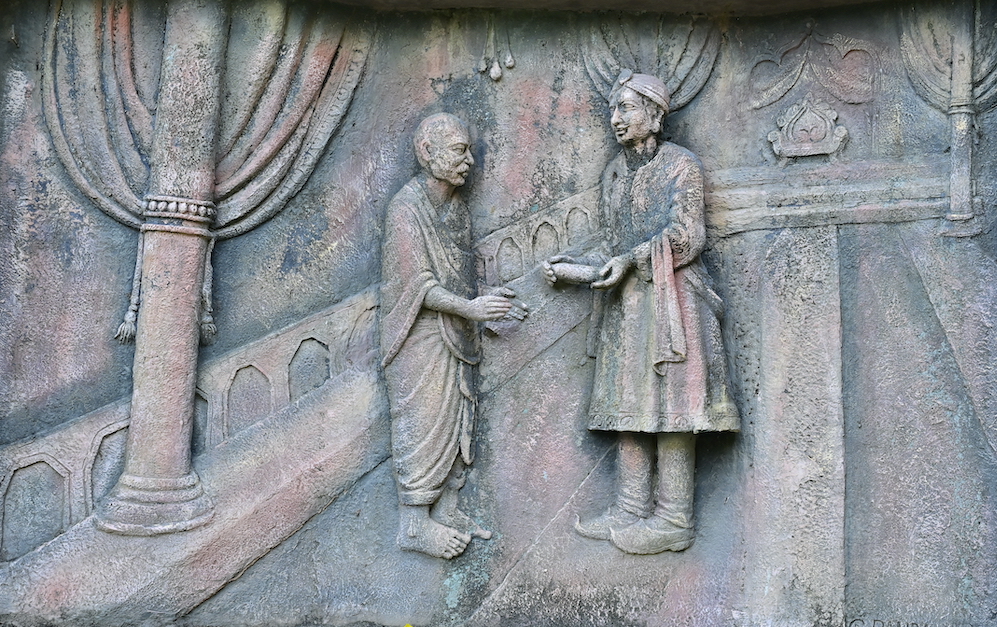 |
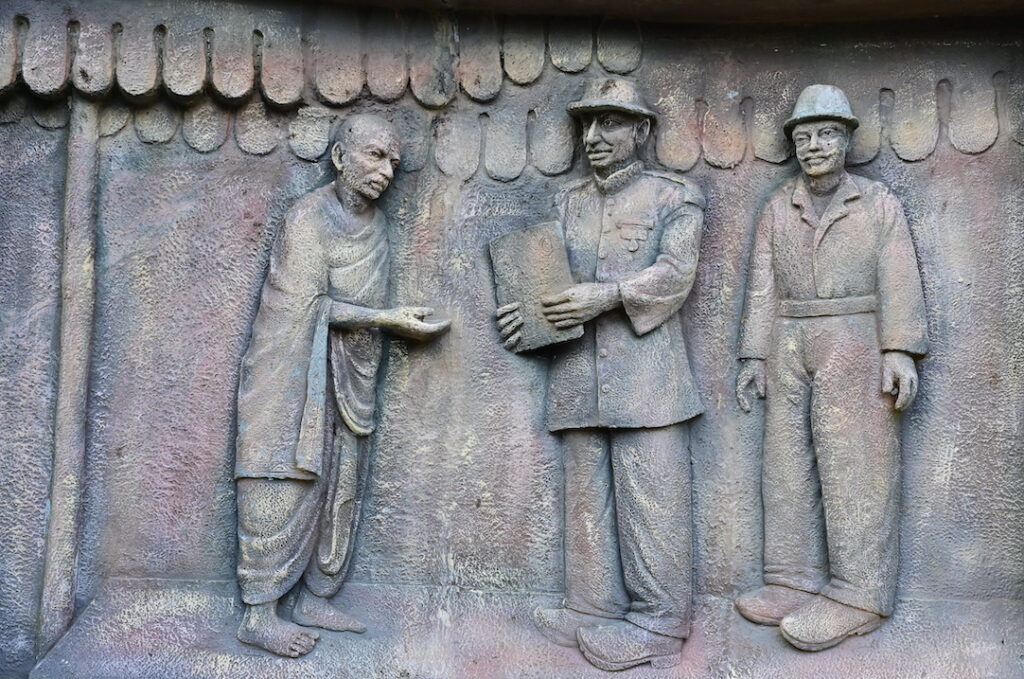 |
Personal life and struggles
According to the family history written by his grandson Raghunath Singh Samanta in the book Pathani Samanta Jeebani Darpana, Pathani Samanta had married Sita Devi, daughter of the king of Angul in 1857 in a dramatic way. According to the book, the bride’s family initially refused the alliance on the day of the wedding due to his unprincely looks. However, he impressed the bride’s family with his flawless śloka recitation right at the wedding venue and won them over. The couple had five sons and six daughters but tragically lost two sons and four daughters over time. One can imagine his personal grief and struggles. Yet he kept his focus on night-sky observations, calculations and academic work.
He had a very unlikely adversary in the local king, Natabar Singh Mardaraj, who took a dislike for him when he started getting recognition and an invitation by the Viceroy Lansdowne himself. Samanta, being dedicated to his routine, had in fact declined the invitation to travel to erstwhile Calcutta, upon which it was a British emissary Mr. Cook who was tasked with awarding the honour of the title “Mahamahopadhyaya” and pension at Cuttack. The king started creating hurdles to discourage Samanta from travelling to Cuttack too, and the anecdote says that when word reached Mr. Cook, he actually issued a warrant against the king! However, Samanta turned instantly from an adversary to a saviour when the king requested him to meet Mr. Cook with a plea of clemency. Samanta sought clemency for the king with this diplomatic argument.
Through such anecdotes, Chandrasekhara Samanta comes across as a man who did not bear any grudges against those who doubted him.

His focus was his scientific work and his daily routine had hours dedicated to meditation and prayer
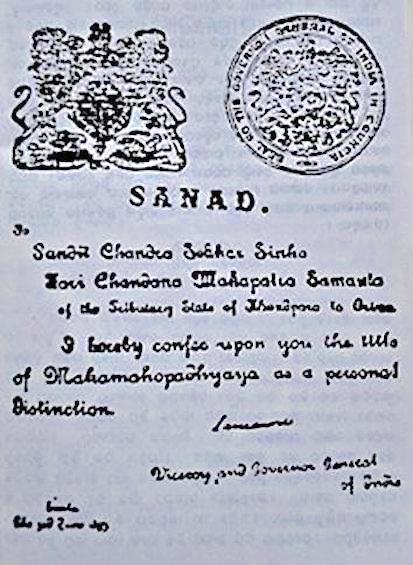
The very fact that Samanta wrote on palm leaves when paper, ink and printing technology had already arrived in India, bears testimony to the fact that he was far removed from reality and was happy working on the ancient treatises in a time capsule. Posthumously too, there remain many unanswered questions about his style and methods. He suffered from chronic health issues due to the many sleepless nights and strains of night-sky observation. Legend says that he had predicted his own death and had travelled to Puri in anticipation, as he revered Lord Jagannath. He passed away on 13 December 1904 after a bout of fever and infection.
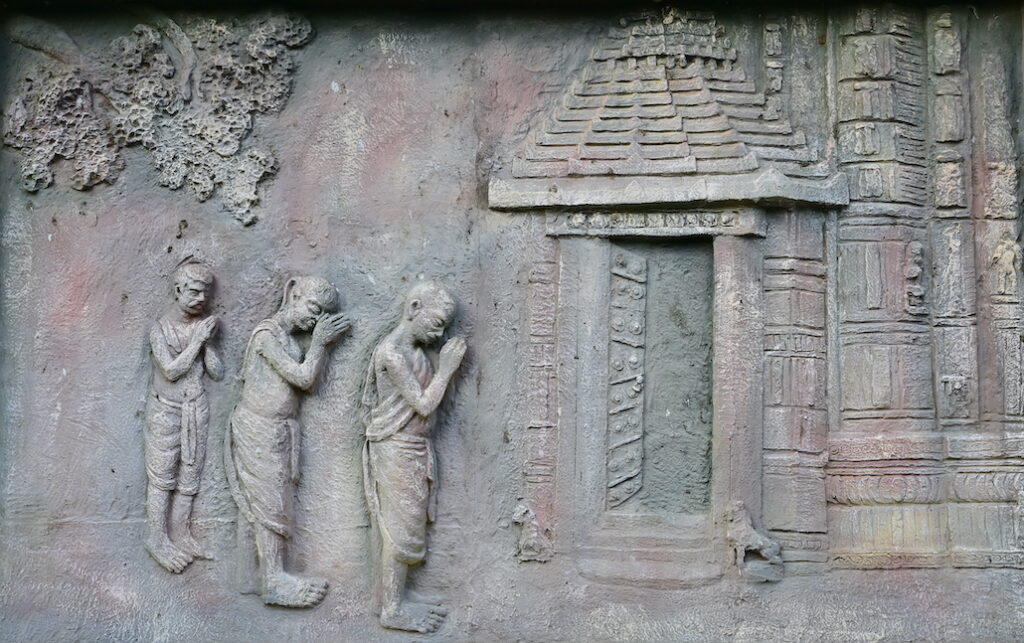 |
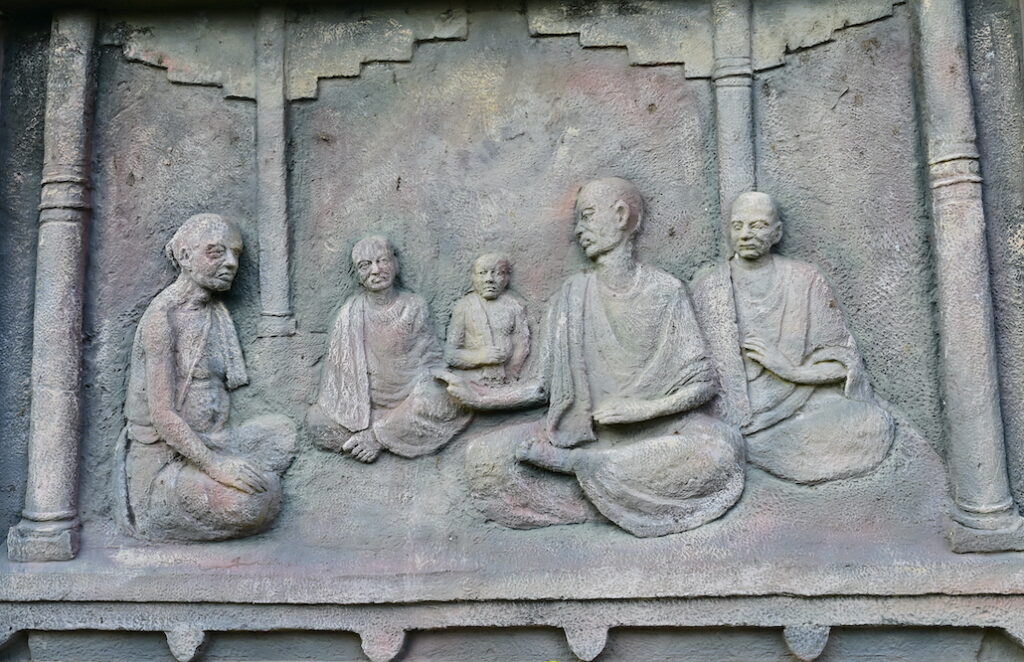 |
Legacy and contributions
His birth state of Orissa has kept his legacy and contributions alive by displaying his work in the state museum. The planetarium in Bhubaneshwar is named after him and its wall displays his life story. There are astronomy clubs and blogs dedicated to him in Orissa. His work is cited and celebrated by astronomers and astrophysicists both within India and abroad. He had even been nicknamed “Indian Tycho” when his work received due scientific recognition. It is best to quote from Nature [1]:
P.C. Naik, who has done extensive research on the contributions of Samanta to Indian astronomy, has mentioned in his article, published for the international conference for the celebration of the 60th anniversary of the UNESCO-Kalinga prize for the popularization of science:
In an email correspondence, he also shared:
Siddhānta-Darpaṇa. He has revised or reformulated the elements, data, and theories of Indian astronomy that were around for a thousand years through assiduous labour, all single handed and unsupported by any. He has made immense original contributions to the four main aspects of positional astronomy, namely: observation, calculation, instrumentation, and theory and model. His works are important today for being used to prescribe almanacs in Odisha since the 1870s and important for enormous data and naked eye observations and findings. According to Jogesh Chandra Ray, he came to see the marvel of the telescope only in 1894.
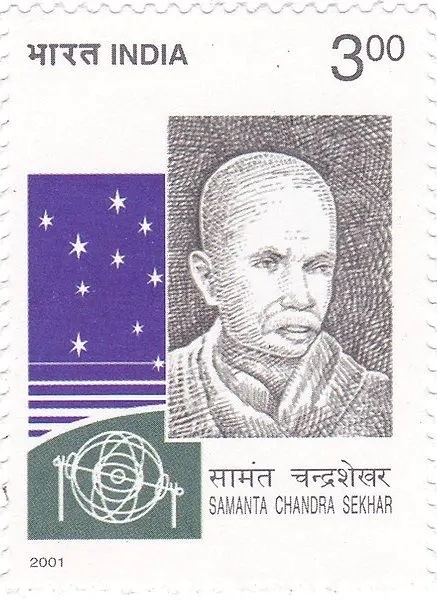
On the date of observations—9th December 1874—the apparent angular diameters of Sun and Venus respectively were 32 minutes, 29 seconds of an arc and 1 min, 3 seconds of an arc. The ratio would have been discernable as 1:30.93.
But then what remains intriguing is that he did not mention any measurement to estimate solar distance.
He belonged, without his knowing, to the Indian renaissance and performed the rare act of reviving and improving upon old knowledge
However, as pointed out by K. Ramasubramanian, the following verses [7] from the Siddhānta-Darpaṇa, are evidence that he was well-informed about gravitational theory and the heliocentric theory of planetary motion:
i\dot{n}glaṇḍapaṇḍitāḥ sūkṣma-matayaḥ kathayanti ca \vert
bhūgolo vartulaḥ kṣudraḥ bhaumādi-grahavad-divi \Vert 28 \Vert
kha-madhyastha-bṛhat-sūrya-bimbasyāvayava-bhramaiḥ \vert
ākṛṣṭaścakra-vabhrānti krāntivṛtte vrajatyasau \Vert 29 \Vert
sapādāśuga-ṣaḍvahni-dinaiḥ pūrvagati-kramāt \vert
bhagaṇaḥ svatanū-bhrāntyā dyurātram cāsya sambhavet \Vert 30 \Vert
ittham gatir-dvidhā bhūmeḥ ānhikī vārṣikīti ca \vert
bhramantyāḥ svatanor-yasmāt nityam sthānāntara-sthitiḥ \Vert 31 \Vert
na patanti janā bhūmeḥ madhyākarṣaṇa-śaktitaḥ \vert
paśyantyarkādikān bhrāntān nāvikā hi nagāviva \Vert 32 \Vert
Here is a prosaic translation of the above verse.
The symposium in 2004 was inaugurated by M.G.K. Menon and the keynote address was delivered by M.K. Pal in which he stressed the fact that Samanta could be the only Siddhantic scholar yet belonging to the renaissance era (without being aware of it):

This quote was reiterated recently by M.S. Sriram, who had presented the summary of the panel discussion.
The symposium was attended by top Indian scientists and astronomers, which included scholars like Tribikram Pati, a mathematician, former Vice-Chancellor of Allahabad University and also a Sanskrit scholar. On the solemn occasion, he even wrote a Sanskrit verse in Devanagari praising Samanta.
Siddhānta-Darpaṇa carries the essence of what motivated Samanta and also puts to rest the intrigue of whether he was aware of western advances.
At the end of every chapter of Siddhānta-Darpaṇa, the dual aims of the book have been reiterated: Bāla-Bodha and (b) Gaṇitā-akṣi-siddhi, which roughly translates as (a) adhering to the aim of teaching students in a manner which is simple and easy to understand and (b) matching mathematical theory with experimental observation.
Also, as mentioned earlier, one of his verses does make an indirect reference to his knowledge of the heliocentric theory of planetary motion which makes it probable that he may have been aware of certain advances, but he opted to stick to his chosen texts and formalism.
The symposium concluded with the formation of a committee with the specific task of initiating the preparation of an authentic translation of Siddhānta-Darpaṇa, after identifying appropriate scholars to undertake the work. Unfortunately, as recently updated by M.S. Sriram, there has been no follow-up regarding this. One can only hope that this task will be undertaken someday by inspired and motivated interdisciplinary Sanskrit, mathematics and ancient astronomy scholars to gain many more insights from this exemplary work.
His true legacy is his contribution to investigative scientific methods and his relentless pursuit of precision, accuracy and evidence in observational data and documentation. One needs to celebrate his pure academic pursuit and curiosity. The true spirit of scientific pursuit is the spirit of inquiry and the quest for evidence—that’s how the baton of scientific investigation gets passed on.
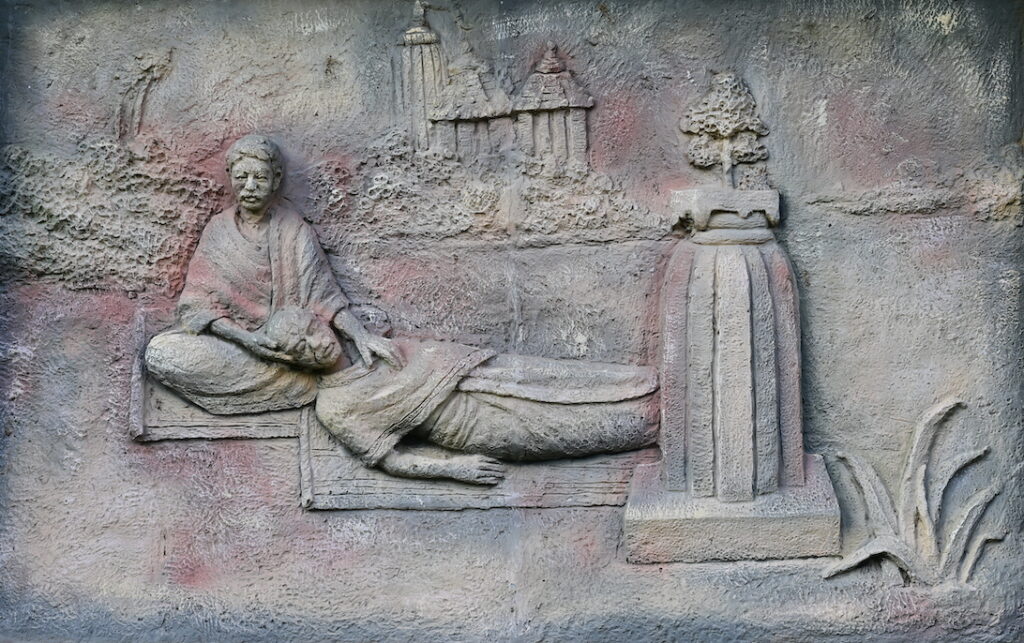 |
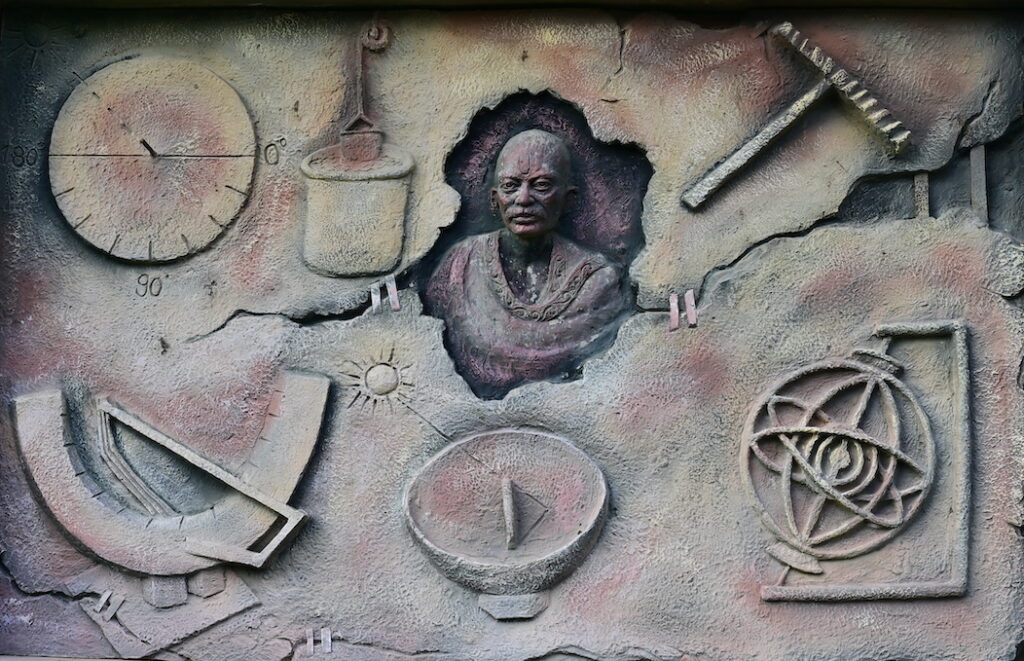 |
Acknowledgement: The author wishes to acknowledge M.S. Sriram for extending all help and sharing resources which proved crucial for this article. We are also grateful to Sriram and P.C. Naik for sharing their views and insights about the relevance and importance of Samanta’s contributions. Many thanks to Abhijit Kar Gupta for the photographs and the amazing editing team of Bhāvanā for valuable editing inputs.\blacksquare
References
- [1] A Modern Tycho, The Nature, Vol 59, no. 1532, 9 March 1899, pp 430–431.
- [2] Knowledge, Vol. XXII, (1899) pp. 257–258.
- [3] P.C. Naik and L. Satpathy, Samanta Chandra Sekhar: Life and work, Current Science, Vol. 69, No. 8, October 1995.
- [4] P.C. Naik and L. Satpathy, Samanta Chandra Sekhar: The great naked-eye astronomer; in Proceedings of the Workshop on `Heritage of Ancient Indian Astronomy’, IUCAA, Pune, Bulletin of the Astronomical Society of India (1998) 26, 33-49.
- [5] Proceedings of National symposium on Scientific contributions of Samanta Chandra Sekhar to Astronomy, June 2004.
- [6] Ancient Indian Astronomy and Contributions of Samanta Chandra Sekhar, Editor L. Satpathy, Narosa Publishing House.
- [7] Siddhānta-Darpaṇa, Indian Depository, Calcutta; Chap. 16, verses 28–32, pp. 152.
Footnotes
- https://www.liquisearch.com/chinese_astronomy/star_catalogues_and_maps/star_catalogues. ↩
- Keynote address- Manoj K. Pal, National symposium on Scientific contributions of Samanta Chandra Sekhar to Astronomy, held on 11 June 2004. ↩
- See `Three trails to Sangamagrama’, by C.S. Aravinda and Sudhir Rao, Bhāvanā, Vol 6(3) July 2022, pp. 5–42. http://bhavana.org.in/three-trails-to-san\%cc\%87gamagrama/. ↩
- See `Two Jesuits who introduced modern education in India’, by Madhuri Katti, Bhāvanā, Vol 6(2) April 2022, pp. 14–23. http://bhavana.org.in/two-jesuits-who-introduced-modern-education-in-india/. ↩
